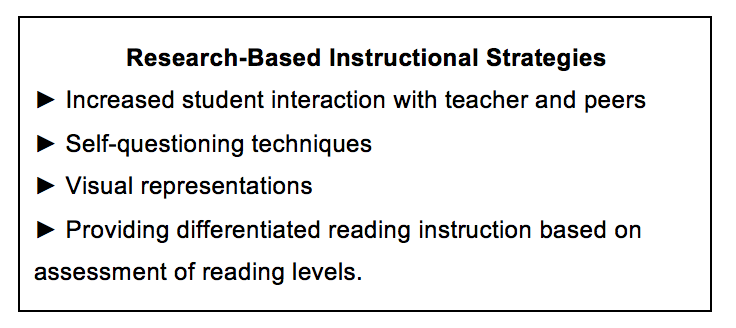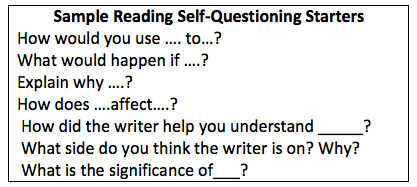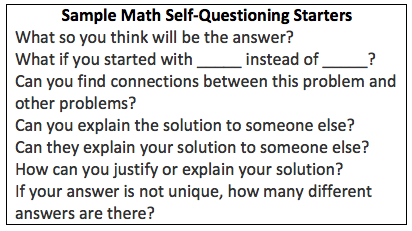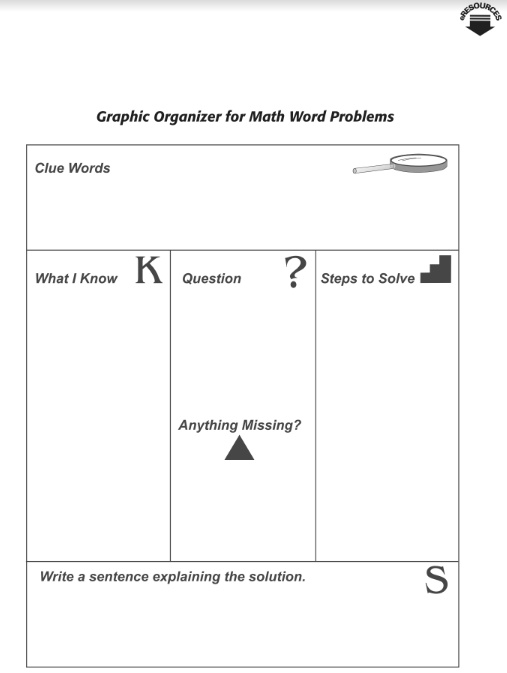Four MTSS Strategies for the Middle Grades
By Barbara R. Blackburn and Bradley S. Witzel


In most cases, the same strategies focused on those who struggle most will also improve learning for other students in the same classroom. During small group and individual interventions, students with academic difficulties can receive more specifically targeted interventions focused on areas of need.
Empirically Validated Instruction
While assessment and motivation practices are important for the development of a MTSS approach, empirically validated instruction is needed to meet the potential of each student.
In our book Rigor in the RTI and MTSS Classroom: Practical Tools and Strategies (Routledge, 2018) we explore highly effective instructional practices. Let’s look at strategies for four of these.
Increased Student Interaction with Peers
Increased interaction with peers is beneficial to academic learning, and it also facilitates social and emotional learning. However, most teachers will point out that, too often, students working together can distract from, rather than facilitate, learning.
Sarah Brown Wessling, a former National Teacher of the Year, describes Conver-Stations in a Teaching Channel video. It’s an alternate way to inspire discussion and keep students on task. Students are placed into a few groups of 4-6 students each and are given a discussion question to talk about.
After a few moments (you’ll need to decide the appropriate amount of time) one or two students from each group rotate to a different group, while the other group members remain where they are. Once in their new group, they discuss a different but related question, and they also share some of the key points from their last group’s conversation. For the next rotation, students who have not rotated before move to a new group, resulting in groups that continually evolve.
Self-Questioning Techniques
Self-questioning has also been shown to increase learning. However, we’ve found that in many cases, students who are struggling need additional support for self-questioning in the form of prompts or actual questions.
Prompts are sentence starters that provide a jumping-off point for students; the full question gives additional help. Although self-questioning is most often discussed for the reading classroom, we find it to be a helpful strategy as students are problem-solving in other subjects. Let’s look at samples for both reading and math.
Visual Representations
Visual representations help students “see” the process of learning. In Rigor is NOT a Four-Letter Word, Barbara shared a graphic organizer for solving word problems developed by a school with a large percentage of high-needs students. It helps students break down the problem-solving process into smaller chunks, and it actually models the strategic process for them.
Providing Differentiated Reading Instruction Based on Assessment of Reading Levels
Finally, although providing differentiated instruction based on reading levels is beneficial, it can provide a specific challenge. How can we meet students’ needs without isolating or labeling those who are struggling or those with special needs?
Teachers in one K-5 school that we observed had a different approach to address this issue. Nearly 75% of their students scored below grade level on state testing, and many had been identified with learning disabilities. The fifth-grade teachers typically chose one novel for all of the students to read each month, but they were difficult for these students to read. They wanted students to work at rigorous levels, but they also wanted them to be successful.

Each teacher met with one of the four groups to facilitate discussions and ensure understanding. Students who needed additional support received it during Tier 2 or 3 instruction. Then students returned to their original classrooms and all of the teachers led whole-group discussions about Martin Luther King, Jr.
A key element of this process was that each of the books contained some information that the other groups had not read. During the class discussion, the teachers asked questions to elicit specific information from each group.
One of the benefits was that students from all four groups had unique information to contribute, reinforcing everyone’s importance to the whole group conversation. Students who could read at a higher level were challenged to do so. Finally, students were placed into new groups with others who had read different books so that they could create a final project about Martin Luther King, Jr.
Conclusion
MTSS is designed to meet the needs of all students. A key aspect is implementing evidence-based instructional practices, which will help address learning difficulties. Learning with peer interactions, using visual representations, self-questioning, and differentiating reading based on assessment of reading levels are examples of research-based strategies which can be effectively implemented in your classroom, as you also use techniques that assure all students feel respected and fully involved.
Feature image from The Teaching Channel: Conver-Stations – A Discussion Strategy
_________________________________________________
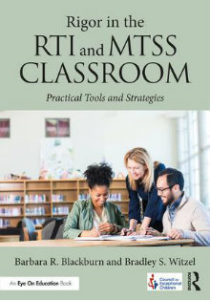
Dr. Brad Witzel is an associate professor and the Special Education Program Coordinator in the College of Education at Winthrop University and has worked as a classroom teacher and before that as a paraeducator in multiple secondary settings. He co-authored 2018’s Rigor in the RTI and MTSS Classroom with Barbara Blackburn.

